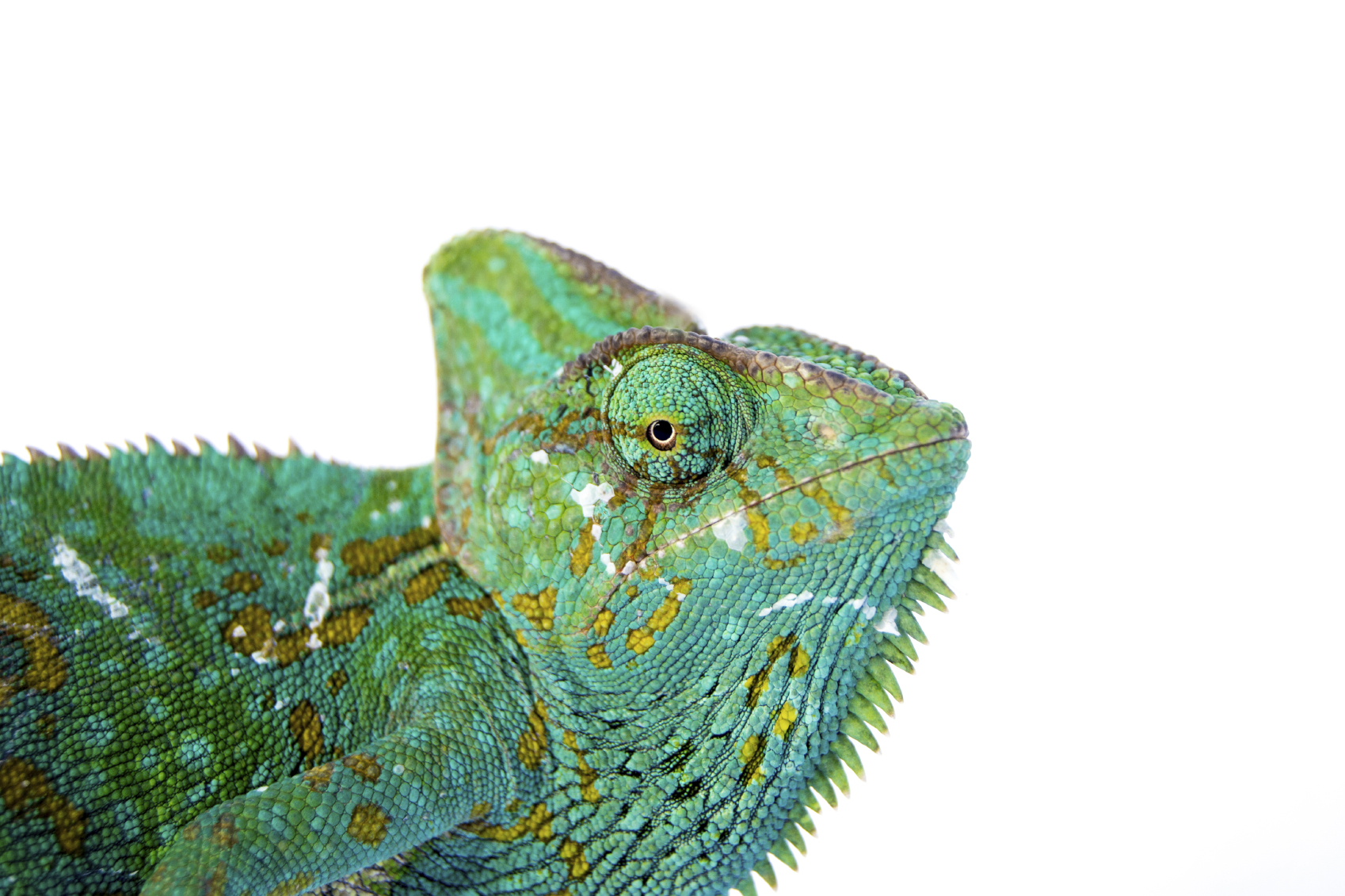
| Printable Version: Fluker's Chameleon Care Sheet and Product List (PDF) |
Coming Soon |
Chameleon Habitat Setup and Care |
|
Observing and caring for a chameleon can be an educational experience, providing insights into reptile behavior, biology, and ecology. People may choose to keep chameleons as pets for several reasons. They have a unique and exotic appearance and an intriguing and quiet nature. If handled and cared for properly, Chameleons live an average of 5 years. Depending on the species of the chameleon, its size can be expected to range from 25 to 33cm. However, male Veiled chameleons can grow up to 60 cm. Quick Facts● Diurnal Creatures: Chameleons are primarily diurnal, meaning they are active during the day and rest at night. ● Helmet Heads: Many chameleons have crests or casque-like structures on their heads, which help to channel water to their mouths when it rains.
● Low Allergen Risk: Chameleons don't produce fur or dander, making them a good option for people with allergies.
● Color Change: Chameleons are famous for their ability to change color, which they use for communication, temperature regulation, and camouflage. ● Varied Species: There are over 200 species of chameleons, found primarily in Madagascar and Africa, but also in parts of southern Europe, the Middle East, and India. ● Independent Eyes: Chameleons can move their eyes independently, allowing them to look in two different directions at once and providing a 360-degree field of vision. ● Long Tongues: They have incredibly long tongues, sometimes longer than their own bodies, which they can shoot out to catch prey with remarkable speed and accuracy. ● Zygodactylous Feet: Their feet have a unique structure, with toes fused into opposable bundles of two and three, enabling them to grip branches tightly. ● Prehensile Tails: Many chameleons have prehensile tails that can wrap around branches, aiding in their stability and mobility in trees. ● Slow Movements: Chameleons are generally slow-moving reptiles, often rocking back and forth as they walk to mimic the swaying of leaves and branches.
|
EnclosureChameleons are mostly solitary animals, only coming together for mating purposes. They can be very territorial and may display aggressive behaviors towards other chameleons. You should keep your chameleon alone in an enclosure. |
SubstrateThe primary focus should be on maintaining proper humidity and cleanliness rather than the substrate itself, as chameleons spend most of their time in the foliage rather than on the ground. |
AccessoriesChameleons rarely drink water out of a bowl. The Repta-Sprayer or Dripper can provide fresh water for the chameleon to lap up off of the furniture in the cage. Chameleons need accessories that mimic their natural environment. With a natural look and feel, Repta-Vines and Bend-A-Branches are the perfect addition to any terrarium. They bend to fit your pet's enclosure while offering more support than conventional vines. |
Temperature & LightingChameleons need a basking source which directs heat and light toward a specific area. A Clamp Lamp is the perfect lamp for reptiles who like to bask. Sockets are rated up to 250 watts for incandescent bulbs; the ceramic model, with protective guards, is ideal for ceramic heat emitters. Both models feature safety clamps and easily attach to the rim of all terrariums.
In addition, a Nightlight Bulb can be used to provide low levels of supplemental ultraviolet radiation.
Full-spectrum lighting closely simulates natural sunlight to provide a natural environment for reptiles, so they feel better and see better while making food colors and skin tones appear as they do in natural sunlight. We recommend Repta-Sun 5.0 UVB Fluorescent Light Bulb.
The ultimate in terrarium environment control, Fluker's Repta-Lighting Hoods feature a durable aluminum shell, built-in reflectors, 6-foot cord/plug sets and extra plug-in receptacles on fluorescent and combo models.
|
Diet & NutritionChameleons are mainly insectivores and eat any of the following insects. As a rule of thumb, make sure the insects are not bigger than the chameleon's head. Otherwise, they will have trouble eating the insect. They require a diverse diet of insects:
● Crickets
● Mealworms
● Wax Worms
● Roaches
● House Flies
Chameleons rarely drink water out of a bowl. Use a dripper or other type of water source for proper distribution amount. They will only eat live prey items. It is important to dust the items once a week with Reptile Vitamin and Repta-Calcium. (Not daily as some vitamins may be toxic if used in excess.) Fluker's Liquid Vitamin provides essential electrolytes and can be mixed into the animal's water. Commercial diets fortified with real crickets (insects) are also a good option and can provide your pet with proper balance of essential nutrients. Fluker's provides helpful tips and tricks to follow when trying to supplement live diets with freeze-dried or commercial dry diet foods. |
Handling & SafetyChameleons do not enjoy being handled and are easily stressed out, making them not very friendly and not for a beginner reptile owner. They are not the easiest reptile to take care of and have very specific care needs. Since they are easily stressed out, keeping them in a stressless environment can be quite challenging and tedious. Contact a vet if you notice any of these symptoms of illness or distress such as: weight loss or decreased appetite, swelling, discharge from mouth or nose, lethargy, labored breathing, paralysis of limbs, or abnormal feces.
|


